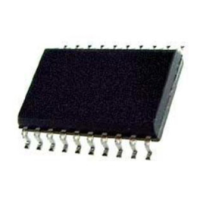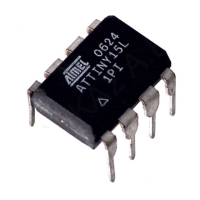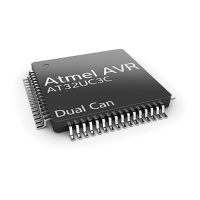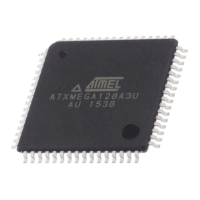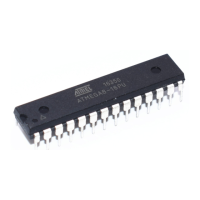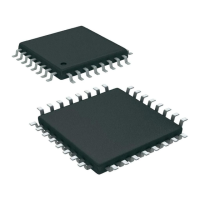88
7679H–CAN–08/08
AT90CAN32/64/128
9.3.8 Alternate Functions of Port G
The alternate pin configuration is as follows:
The alternate pin configuration is as follows:
• TOSC1 – Port G, Bit 4
TOSC2, Timer/Counter2 Oscillator pin 1. When the AS2 bit in ASSR is set (one) to enable asyn-
chronous clocking of Timer/Counter2, pin PG4 is disconnected from the port, and becomes the
input of the inverting Oscillator amplifier. In this mode, a Crystal Oscillator is connected to this
pin, and the pin can not be used as an I/O pin.
• TOSC2 – Port G, Bit 3
TOSC2, Timer/Counter2 Oscillator pin 2. When the AS2 bit in ASSR is set (one) to enable asyn-
chronous clocking of Timer/Counter2, pin PG3 is disconnected from the port, and becomes the
inverting output of the Oscillator amplifier. In this mode, a Crystal Oscillator is connected to this
pin, and the pin can not be used as an I/O pin.
•ALE – Port G, Bit 2
ALE is the external data memory Address Latch Enable signal.
•RD
– Port G, Bit 1
RD
is the external data memory read control strobe.
•WR
– Port G, Bit 0
WR
is the external data memory write control strobe.
Table 9-21. Port G Pins Alternate Functions
Port Pin Alternate Function
PG4 TOSC1 (RTC Oscillator Timer/Counter2)
PG3 TOSC2 (RTC Oscillator Timer/Counter2)
PG2 ALE (Address Latch Enable to external memory)
PG1 RD
(Read strobe to external memory)
PG0 WR
(Write strobe to external memory)

